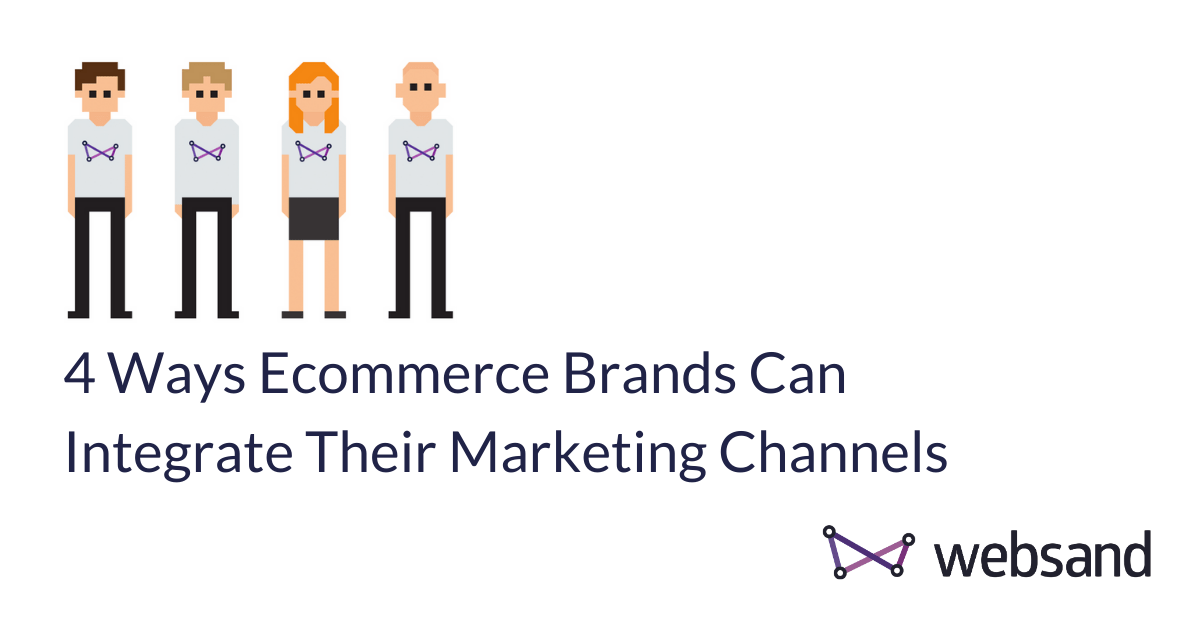How e-commerce brands can integrate their marketing channels
There’s something to be said for the clear prominence of a classic brick-and-mortar retail store. Even if you don’t have a prime location in a popular shopping centre or on a fashionable high street, you’re undeniably there. So you always have a chance of being happened upon.
Running an online store is overwhelmingly easier on the whole. And it has more marketing potential through being viable on a much greater scale. However, it’s fundamentally harder to promote, and it’s all due to that lack of presence. Without anything in place to push people towards your website, it would never be found, and might as well not exist.
Due to this, ecommerce marketers must use all the means at their disposal to drive traffic, and this has led to what’s known as multi-channel marketing. Instead of using just one marketing channel, or even several for disparate campaigns. It involves the creation of one overarching strategy. A strategy that brings channels together to maximise their impact.
Handling this integration process is much easier said than done, though. There are plenty of businesses that struggle to handle the level of work required. So how do you manage it with minimal fuss?
Let’s look at 4 ways in which you can bring your marketing channels together:

Use integration-friendly software
Digital marketing work at scale isn’t done exclusively (or even primarily) through manual effort. It simply can’t be — there’s too much to be done. Instead, it’s managed through major automation, largely using systems like Zapier that are designed to bridge the gaps between distinct systems that don’t have innate connectivity. The more closely you can bind your various tools, the more effectively they’ll serve your multi-channel marketing strategy.
Something you need to consider here, though, is that even the best integration tools can’t connect to a system that actively resists that kind of connectivity — and not all pieces of software support tools like Zapier or IFTTT. Furthermore, even if they do, they might not support many features. Accordingly, it’s vitally important for the future of your marketing campaign that you build it on a solid software foundation.
In general, you’ll be able to tell if a tool you’re considering using is integration-friendly. The website copy will make it abundantly clear: it’ll mention systems that it’s definitely compatible with, and ideally set out connectivity as a core strength. If you can’t find anything about integrations, I advise that you look for an alternative.
A final thing to consider when integration is consent. Make sure your integration providers have the right security and considerations in place. Even if you aren’t in the UK or EU it’s always worth checking if the providers you are dealing with are GDPR compliant (tip: check their privacy notice). You are using them as a processor for your data so it’s always worth doing your homework when selecting the best route.
Implement precise analytics
Suppose that you carefully align your marketing channels to work in tandem, but don’t make any changes to your analytics setup. What will be the result? Well, the results of your marketing will undoubtedly change. But you’ll struggle to figure out exactly how or why. Without detailed feedback, you’ll be left unable to make meaningful alterations to your approach.
This is one of the most common issues with digital strategies these days. Companies focus so much on broadening what they’re doing, throwing as much as possible at the wall, that they overlook how exactly they’re going to see what sticks. If you make several changes to your strategy and see your conversion rate double within a week, how will you know what caused it?
Adequate analytics configuration will make it clear how your results transpired through detailing complex marketing attribution. It’ll show you whether a given social media visitor arrived from Twitter, Facebook, or Pinterest. It’ll also factor in offline marketing channels through the use of custom URLs, QR codes, and even trackable phone numbers. If you don’t have the analytics in place to track something, there’s really no point in bothering at all.
Cross-promote to keep customer journeys going
We just touched upon how an online customer can reach a store in one of many different ways. This is significant when it comes to creating the content for your multi-channel marketing. At any time, someone interested in what you’re offering can lose interest and drop out of your marketing funnel. This is something you have to fight against.
One of the best ways to combat the prospect of dropping out is to ensure smart and steady cross-promotion between your various marketing channels. The end goal of reaching your store and placing an order can be hard to reach, but someone not being ready for that doesn’t mean they’re not interested. So what do you do if someone reaches your Facebook page but won’t click on your website link? You give them somewhere else to go.
For instance, perhaps Facebook gave them a good introduction to your company, but now they want to know more about the brand identity. What are your people like? Are they likeable? Are they worth supporting? Alongside your website link, you can link to your Twitter profile, and even your Pinterest page. If they don’t head to your store, they can check out more of your social media presence, and then they might be ready to convert. The longer you keep them in the rotation of checking out your content, the more chances you’ll have to win them over.
Use chatbots for tracked cross-channel support
I mentioned that there isn’t enough time to manually handle everything in a multi-channel marketing campaign. That particularly goes for customer service — something that’s key for customer retention in this time of great online convenience. Whether someone is looking for a new product to buy or simply chasing up a previous order. You need to be able to help them regardless of which channel they’re using to reach out.
You can hire a massive team of employees and have them consistently search social media for brand-related messages, but that’s horribly inefficient. Instead, you can use chatbots to speed things along on a 24/7 basis. If you can program a script to cover the most common queries you receive, you can use it for a chatbot on your site, through Facebook Messenger, on Twitter, and in various other situations.
After that, offer a simple branded hashtag that your customers can use to tag their issues, and set your chatbots to message the users when needed. In a vitally-important way, service is marketing. So don’t make the major mistake of thinking that anyone with a major issue will follow your outlined support process. The easier you make it to get help, the better your brand will look. And the more likely your customers will be to stick around.
Integration helps you make the most from your marketing channels
If you want to compete in the brutal ecommerce world, you need to pull out all the stops. That means using all viable marketing channels to great effect. Integration is the key to optimising their performance. Making your campaign more than the sum of its parts — so consider these methods for implementing it.
And if you you want to optimise your email marketing channel, we are standing by to help. E-commerce customer retention is our speciality.
With special thanks to Kayleigh Alexandra from Micro Startups for helping create this post.
It’s time to start getting more from your email marketing
Sign up for a free Websand demo and let’s show you how to get the best from your email marketing.
